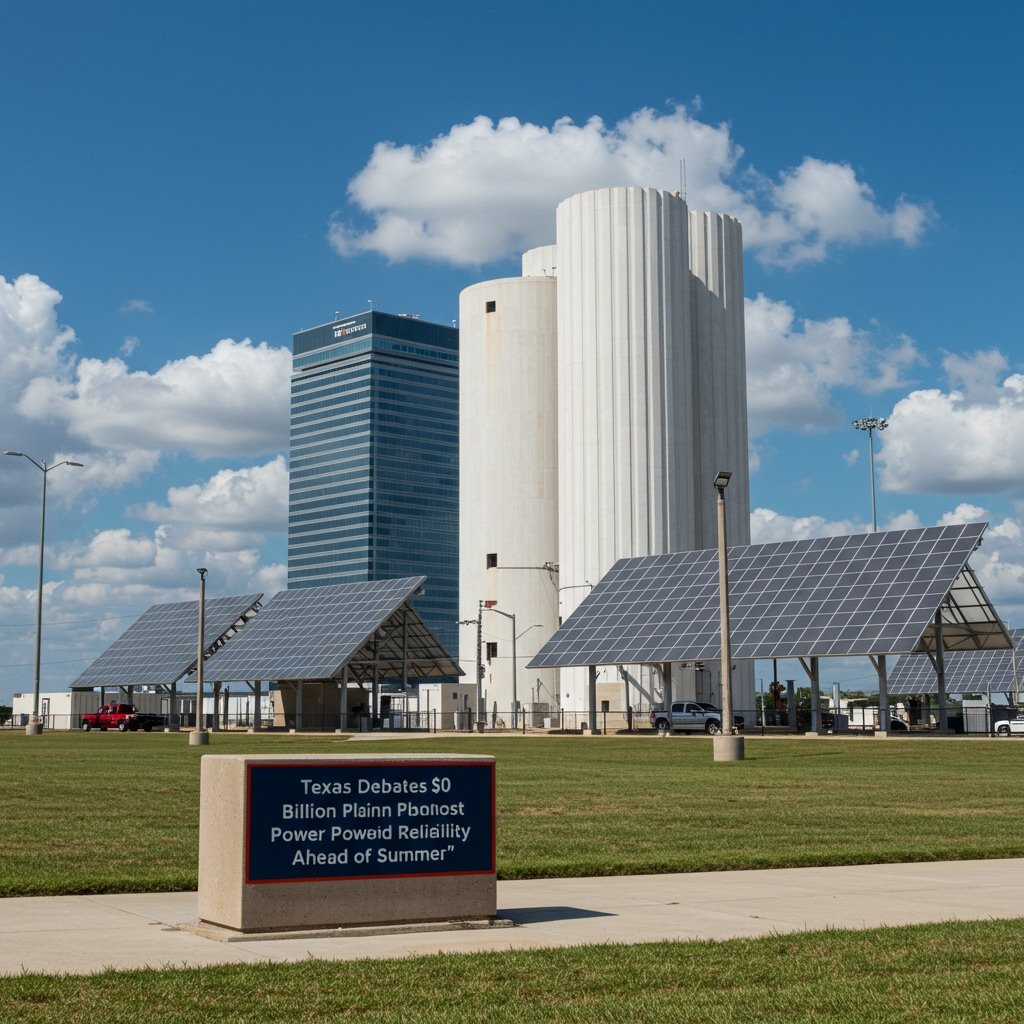Texas Lawmakers Deliberate Landmark $10 Billion Power Grid Investment
Texas lawmakers are currently engaged in robust and intricate discussions surrounding a proposed state investment totaling a massive $10 billion. This significant financial commitment is aimed squarely at modernizing and substantially enhancing the reliability of the state’s critical electric power grid infrastructure. At the heart of this legislative effort is House Bill 22 (HB 22), a key piece of legislation under intense scrutiny within the Texas House.
The proposed $10 billion initiative, as outlined in HB 22, seeks to establish a dedicated new state fund. The primary objective of this fund would be to provide powerful financial incentives for the construction of dispatchable power generation resources – those capable of being turned on or off as needed, such as natural gas plants. Beyond boosting generation capacity, the plan also targets vital upgrades to the state’s transmission infrastructure, the network of lines and substations that carries electricity across the vast distances of Texas.
The bill is presently under detailed review and debate within the House State Affairs Committee, a legislative body chaired by Representative Todd Hunter. The committee’s proceedings are crucial in shaping the final form and implementation details of the ambitious plan.
Discussions among lawmakers, regulators, and stakeholders are multifaceted, focusing on several critical aspects of the proposed investment. A major point of deliberation revolves around the source of the substantial $10 billion funding. Lawmakers are weighing options that include potentially drawing from the state’s considerable Rainy Day Fund, officially known as the Economic Stabilization Fund, or alternatively, issuing state bonds to finance the initiative over a longer term. Each funding mechanism presents its own set of fiscal considerations and potential impacts on state finances.
Equally important is the development of the regulatory framework that will govern how these funds are allocated and managed. Ensuring transparency, effectiveness, and accountability in the deployment of such a large sum is paramount. Key input and guidance are expected from the Electric Reliability Council of Texas (ERCOT), the independent system operator that manages the flow of electric power to more than 26 million Texas customers and represents 90 percent of the state’s electric load. ERCOT’s technical expertise and operational oversight are considered vital for the successful implementation of any grid enhancement strategy.
The push for this significant legislative action is driven by recent history and the urgent need to prepare for future challenges. Lessons learned from extreme weather events, most notably the devastating Winter Storm Uri in February 2021, highlighted critical vulnerabilities in the state’s power infrastructure, particularly concerning generation reliability and transmission resilience during periods of peak demand and stress. The state experienced widespread, prolonged power outages during that event, leading to significant economic losses and tragic loss of life.
Legislators are keenly aware that the upcoming summer demand season poses an immediate test for the grid. High temperatures drive record electricity consumption due to air conditioning use, placing immense strain on generation and transmission systems. Passing legislation and initiating investments ahead of this period is seen as crucial proactive measure.
Leading figures within state government have voiced their perspectives on the proposed plan. Lieutenant Governor Dan Patrick has been a prominent advocate for boosting the state’s dispatchable generation capacity, emphasizing the need for reliable power sources that can function consistently regardless of weather conditions. His support underscores the bipartisan recognition of the grid’s importance.
However, the proposed investment is not without its critics and concerns. Consumer advocates and environmental groups have raised important questions about potential impacts on electricity rates for residential and commercial customers. There are concerns that the costs associated with the $10 billion investment, depending on the funding mechanism and regulatory structure, could eventually be passed on to consumers through higher utility bills. Furthermore, debates continue regarding the optimal balance between investing in traditional dispatchable sources like natural gas and accelerating the integration of renewable energy sources and battery storage, which proponents argue offer long-term cost and environmental benefits.
The legislative process for HB 22 is expected to involve further committee hearings, floor debates in both the House and Senate, and potential amendments as lawmakers seek to refine the bill’s provisions. Reconciling differing views on funding sources, regulatory oversight, and the energy mix will be critical steps toward reaching a consensus. The outcome of these deliberations will have profound implications for the future reliability and cost of electricity in Texas.






